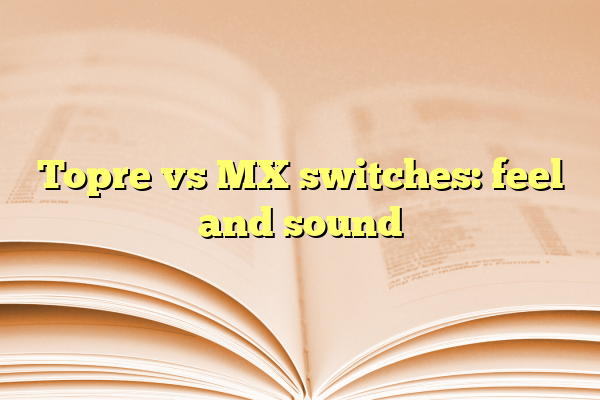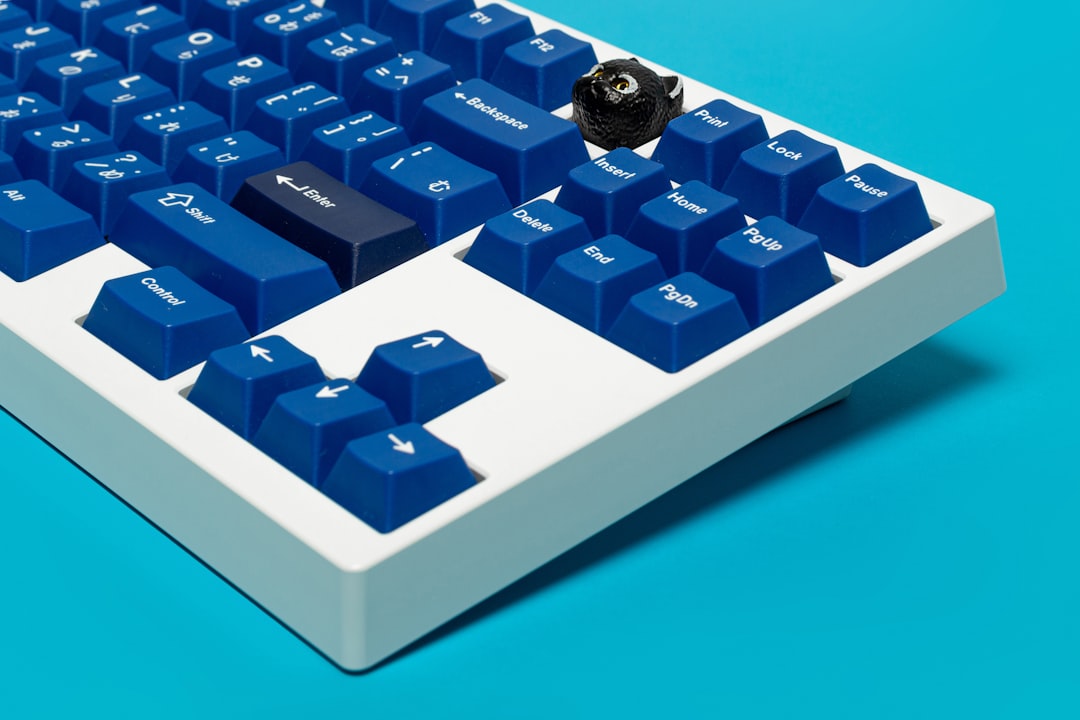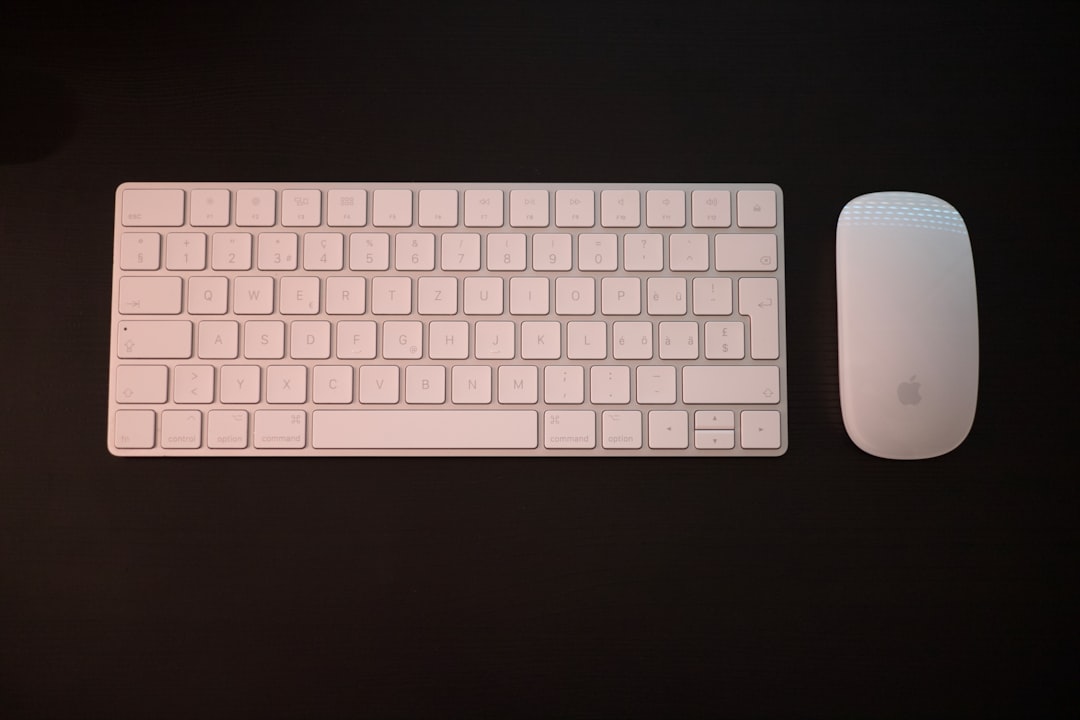
Topre vs MX switches: feel and sound
Whether you’re a mechanical keyboard enthusiast or a newcomer dipping your toes into the world of premium typing experiences, you’ve likely encountered the ongoing debate: Topre vs MX switches. These two switch types stand as titans in the industry, offering completely different sensations and satisfying different kinds of users. Choosing between them often boils down to one’s personal preferences in typing feel and sound.
In this article, we’ll explore how Topre switches differ from the ubiquitous MX-style switches—such as Cherry MX, Gateron, or Kailh—in both tactile feedback and auditory experience. We’ll also help you decide which one might be better suited to your typing or gaming needs.
Contents
Understanding the Basics
Topre switches are a type of electro-capacitive switch—a hybrid between mechanical and rubber dome technology. They are often found in high-end Japanese keyboards like the Realforce and HHKB (Happy Hacking Keyboard).
MX switches, usually referring to Cherry MX and their clones, are true mechanical switches. They have a wide variety of types that offer different actuation characteristics, such as Red (linear), Blue (clicky), and Brown (tactile).
Feel Comparison
The “feel” of a keyboard switch is arguably the most critical factor for enthusiasts. Let’s break down the tactile differences between Topre and MX switches.
Topre Switch Feel
- Smooth and Refined: Topre switches are known for their buttery-smooth keystrokes. Thanks to their electro-capacitive mechanism, they have no mechanical contacts, which reduces friction and wear.
- Tactile Bump: Topre offers an extremely satisfying tactile bump that feels more rounded and less abrupt than tactile MX variants like Brown or Clear.
- Variable Actuation: Some Topre boards feature variable actuation forces across the keyboard. For instance, pinky keys may have a lighter force, aiding ergonomic typing.
Typing on a Topre feels precise and fluid. The keystroke begins with a gentle bump and ends with a soft landing, thanks to the rubber dome cushioning underneath. Some describe it as a “luxurious thock.”
MX Switch Feel
- Wide Variety: MX switches offer a spectrum of feel experiences. Linear switches like MX Reds glide straight down without any tactile bump, while MX Browns offer a soft bump. Clicky switches like MX Blues add audible feedback and a sharp actuation bump.
- Consistent Resistance: Actuation force is consistent across the keyboard, which some users prefer for muscle memory and gaming precision.
- Customizability: With a hot-swappable board, users can easily change MX switches to find the perfect feel for their typing needs.
While Topre switches feel uniquely “pillowy,” MX switches tend to feel crisp and mechanical, especially in clicky variants. This mechanical precision is especially appreciated by gamers and fast typists who need quick response and reliable actuation.

Sound Profile Comparison
Topre Switch Sound
Topre switches produce what’s often described as a “thock”—a deep, soft, and non-intrusive sound. This happens because of the rubber dome dampening keystrokes, which results in:
- Lower pitch: Deeper than most mechanical sounds, minimizing sharp clicks.
- Less echo: The internal design and rubber cushioning naturally absorb some of the noise, making them suitable for quiet environments.
Fans of Topre keyboards often adore the soothing sound, which provides feedback without being distracting. It’s an ideal sound profile for office settings or shared workspaces.
MX Switch Sound
Depending on the switch type, MX switches can vary significantly in noise output:
- MX Red: Linear and quiet without tactile or clicky feedback; still produces bottom-out noise unless dampened.
- MX Brown: Soft tactility, similar in noise level to MX Red but with added tactile sensation.
- MX Blue: Loud and clicky, with an audible “click” on actuation and a second sound on bottom-out. Not ideal for quiet environments.

Overall, Topre tends to be quieter and more muted, while MX switches—especially clicky ones—are more communicative and “chatty.” Some users love the crisp clicky feedback for its nostalgia or listening pleasure, while others may find it distracting in shared spaces.
Durability and Maintenance
Another factor worth considering is the overall durability and ease of upkeep of these switches.
Topre
- Rated for around 50 million keypresses. While this may not sound as high as MX switches, Topre switches are less prone to key wobble and other mechanical wear issues.
- Due to being a complex hybrid switch, modding options are limited. Replacing parts, lubing, or customizing is more difficult and generally not recommended unless you’re highly experienced.
MX Switches
- Rated for up to 100 million keypresses in some premium models.
- Highly moddable: Users can replace springs, lubes, swap stems, or even mix switch parts (Franken-switches).
- Widely available replacements: Easy to find and purchase individual MX-compatible switches for testing or replacement.
If you’re someone who loves to tinker or finely tune your typing experience, MX switches provide far greater flexibility. Topre’s simplicity and consistency, however, can be attractive to users who prefer a plug-and-play premium feel.
Price and Availability
When it comes to accessibility, Cherry MX switches and their clones dominate the market. This leads to mass availability and more affordable options. Topre keyboards, on the other hand, are premium-priced and niche.
- Topre keyboards like Realforce or HHKB often start around $200–300, with limited regional availability.
- MX mechanical keyboards can be found in a wide range—from affordable starter models under $50 to high-end custom builds that cost several hundred dollars.
This price difference often becomes a deciding factor for casual users. However, if budget is not a constraint, many seasoned typists find the smooth elegance of Topre to be well worth the investment.
Which One Is Right for You?
Ultimately, the choice between Topre and MX switches depends on your typing needs, preferences, and use case. Here’s a quick breakdown to help you decide:
You may prefer Topre if you:
- Value a premium, refined typing feel.
- Prefer quiet operation with a deep “thock.”
- Do a lot of writing, coding, or office work in shared spaces.
- Are looking for a top-tier experience out-of-the-box with minimal tinkering.
You may prefer MX switches if you:
- Want extensive variety or customizable typing experiences.
- Need fast response times and consistent feel for gaming.
- Are on a budget or want a broader range of keyboard designs.
- Like to mod or experiment with different mechanical switches.

Final Thoughts
The Topre vs MX debate continues to stir passionate discussion among keyboard enthusiasts, and for good reason. Each offers a unique set of features that cater to different types of typists. If you’re looking for an ultra-smooth, ultra-quiet typing experience that feels like something out of the future, Topre might be your ideal choice. On the other hand, if you want precision, customizability, and that traditional mechanical feel, MX switches are the tried-and-true champion.
Whatever you choose, exploring the nuances of keyboard switches can be a deeply rewarding journey—one keystroke at a time.
